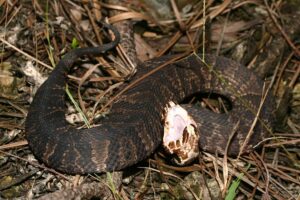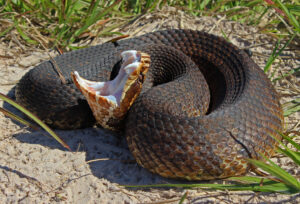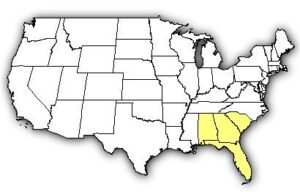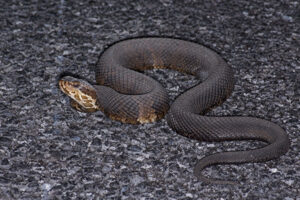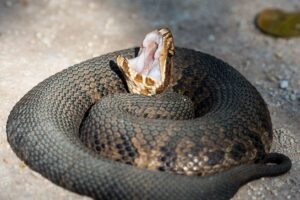The Florida cottonmouth is a moderately large, thick-bodied pit viper endemic to the United States. The nocturnal snake is an excellent swimmer and feeds mainly on aquatic species. It has heat-sensing pits between the eye and nostril to detect prey and predators at night.
Scientific Classifications
- Suborder:Serpentes
- Family:Viperidae
- Genus:Agkistrodon
- Species:A. conanti
Conservation Status
Description
Size
The average size of an adult is 30-48 in (76-122 cm), but rarely, specimens can exceed 6 ft (183 cm).
Color and Appearance
The body color is dark brown, olive brown, to black with 10-17 dark bands. These bands are often darker at the margins but lighter at the center with irregular spotting or marking. They grow darker with age, with the patterns and banding often faded or absent in adults. The head has distinct black cheek stripes on each side, flanked by white or light cream stripes above and below. The dorsal scales are strongly keeled.
Are They Dangerous to Humans
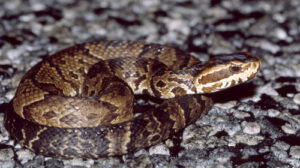
The pit viper is not aggressive and avoids direct contact with people. Most bites occur when if it is accidentally stepped on or intentionally molested. The bite can be very dangerous to humans and pets, requiring immediate medical attention.
The Florida cottonmouth’s extremely hemolytic venom is capable of causing more extensive necrosis than other snake venoms. It can sometimes be lethal, with a 17% mortality rate.
Florida Cottonmouths at a Glance
Distribution
It occurs in the Florida peninsula (including the Florida Keys and many barrier islands) and southern Georgia in the United States.
Habitat
Almost all types of wetlands in its range are home to the Florida cottonmouth, including offshore islands and brackish water. Having said that, the species is not entirely dependent on water and can occasionally be encountered as far away as a mile (1.6 km) from water.
Lifespan
The lifespan of the Florida cottonmouth is 20-25 years.
Predators
Bigger animals like great blue herons, kingsnakes, and occasionally largemouth bass are its predators.
Diet
It eats fish, insects, salamanders, frogs, snakes (including other cottonmouths), small turtles, baby alligators, lizards, small mammals, birds, and carrion.
Reproduction
Viviparous (gives birth to live young)
There is no specific mating season, but births generally occur in summer. A female usually breeds every alternative year and gives birth to 6-8 young in a litter. The juveniles have similar patterns as the adults but are “red dirt” or clay-red in color. They are 7.1 in (18 cm) in length.
Source
floridamuseum.ufl.edu, flickr.com, inaturalist.org, venombyte.com, wildherps.com, i.pinimg.com

